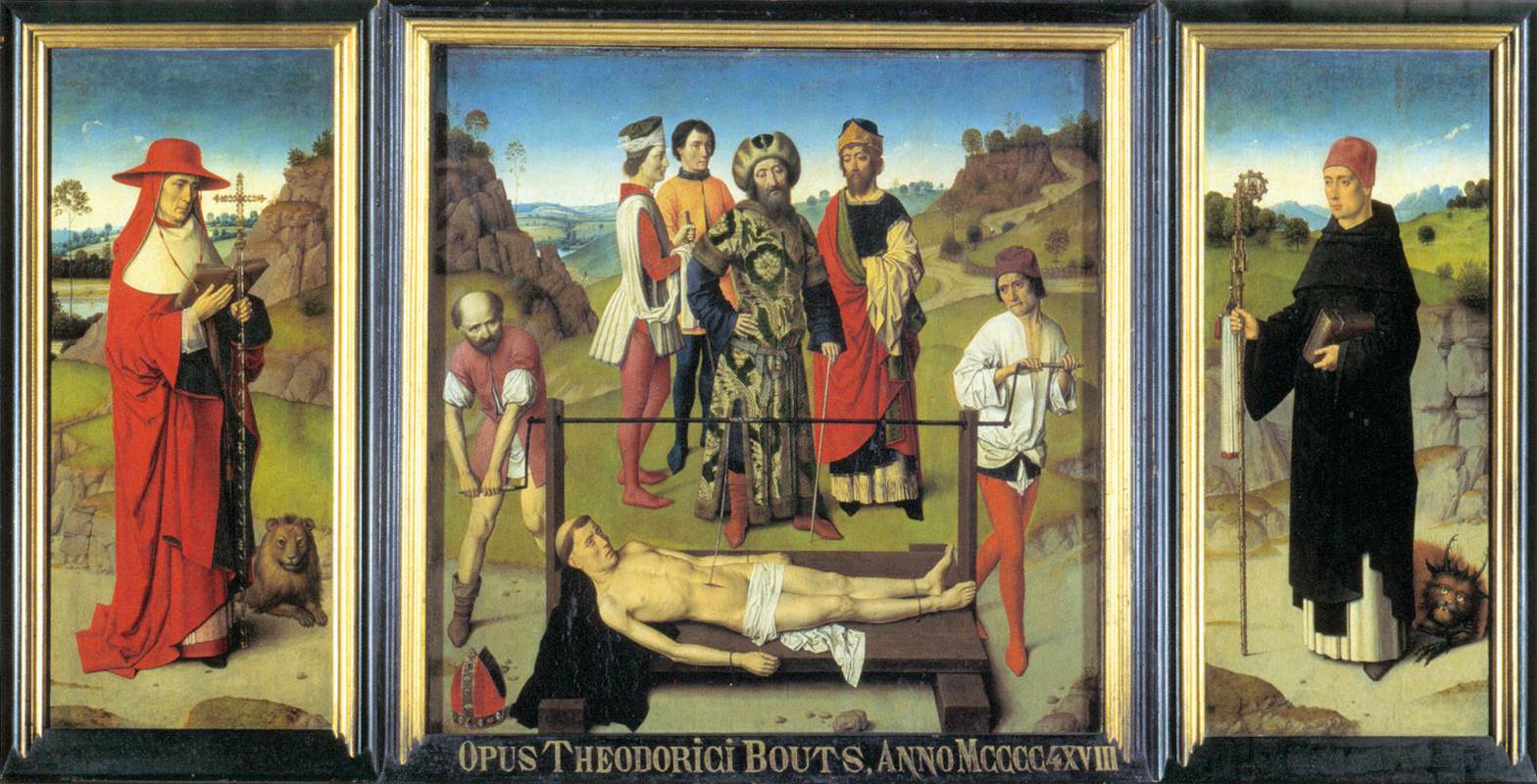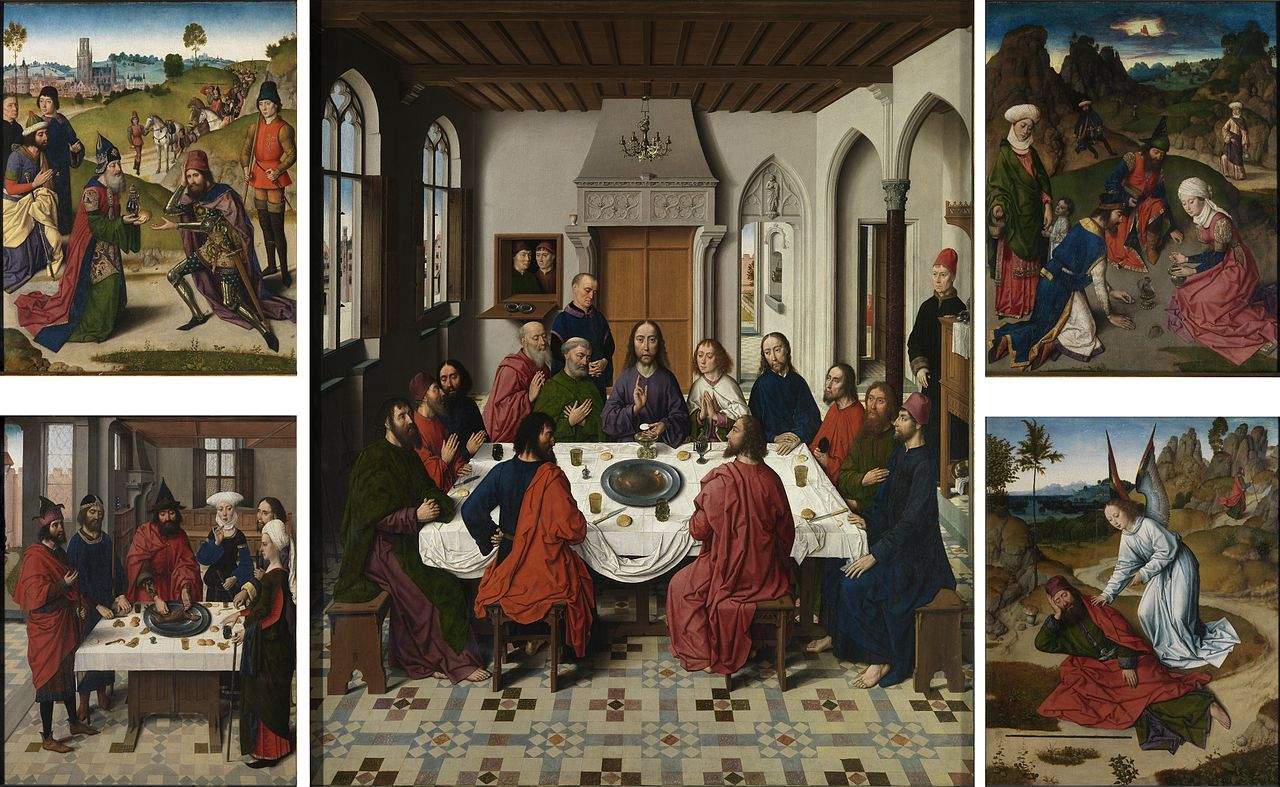St. Peter ’s Church in Leuven (Flanders, Belgium) is about to reopen to the public with a permanent exhibition, curated by the M Leuven Museum (“Leuven” is the name for Leuven in Flemish) and entitled Between Heaven and Earth. Experience Bouts: it is dedicated to the two most important works by the great Flemish painter Dieric B outs (also known as Dirk Bouts; Haarlem, c. 1415 - Leuven, 1475), The LastSupper and The Martyrdom of St. Erasmus, both painted for St. Peter’s Church, where they are still located today. The M Leuven museum, in order to tell the story of the two paintings within their historical context, has also come up with an innovative digital experience. The operation is part of the Flemish Masters project, coordinated by the Flanders Tourist Board and organized by the board in collaboration with the City of Leuven, the Brabant Tourist Board and St. Peter’s Church, with support from De Standaard and Klara companies.
The exhibition begins with theLast Supper, painted between 1464 and 1468, and continues with the Martyrdom of St. Erasmus, a 1468 work restored for the present exhibition. They are among the greatest masterpieces of Flemish art, as well as among the pinnacles of Dieric Bouts’ art. The painter, born in the city of Haarlem where he was educated, moved from a young age to Louvain where, in 1448, at about 30 years of age, he married one of the wealthiest young women in the city and began to become increasingly successful until he became the city’s official painter. From Louvain he would not move again: in fact, he died in the Flemish city in 1475. We do not know much else about him: the sources, in fact, do not say much about his life. Nonetheless, Bouts is one of the greatest masters of the Flemish Renaissance and, although not as well known as his colleagues such as Jan van Eyck and Rogier van der Weyden, he has left us works of the highest quality. TheLast Supper is a painting of particular importance because it helped spread the canons of perspective in Flanders: until then, there had been no other artists capable of creating works with a higher degree of perspective illusionism. Moreover, the side panels show that Bouts was among the first landscape painters. The triptych was commissioned from him by the Confraternity of the Blessed Sacrament in Leuven.
The other work, the Martyrdom of St. Erasmus, on the other hand, was commissioned from him around 1460 by the chapter of St. Peter’s Church, where, as mentioned, it still stands today.The three saints we see in the triptych are Jerome, Bernard and Erasmus, themselves symbols of erudition, asceticism and martyrdom, and thus in turn symbols of the three forms of holiness. This painting was carefully researched and restored in 2019 by ll IPARC - International Platform for Art Research and Conservation, with the support of M-LIFE, the fund managed by the King Baudouin Foundation.
The exhibition, as anticipated, can also be visited thanks to digital support. In fact, the M Leuven museum has developed an experience that makes use of augmented reality to allow visitors to interact with the church to discover its history, treasures, and works. By pointing the special tablet at the works, one will be able to discover information about the objects they want to explore: for example, it is possible to find out all about the figures that populate theLast Supper by Dieric Bouts by standing directly in front of them. And again, thanks to augmented reality, it will be possible to analyze the painting through interactive images that will be superimposed on the work (for example, to show the lines of perspective). The visit with augmented reality through the tablet is also designed so that the visitor decides on the visit path as he or she prefers and adapting it according to his or her own pace and time: it consists of a total of twelve stages and in each one an augmented reality experience is activated. The augmented reality visit is available in Dutch, French, English, German, and Spanish and costs 5 euros. Admission to St. Peter’s Church is free, and if you prefer a more “traditional” visit, you can also purchase a traditional guided family tour (in Dutch, French, and English) for only 5 euros. Also for 5 euros you can buy a guidebook of the church, an extraordinary example of Brabant Gothic architecture. Group guided tours, on the other hand, cost 65 euros.
St. Peter’s Church opens Mondays, Tuesdays, Thursdays, Fridays and Saturdays from 10 a.m. to 4:30 p.m., Sundays from 11 a.m. to 4:30 p.m. Closed on Wednesdays. For more information you can visit www.diericbouts.be or email info@mleuven.be.
 |
| Dieric Bouts, Triptych of St. Erasmus (1468; oil on panel, 34 x 148 cm; Leuven, St. Peter’s Church) |
 |
| Dieric Bouts, Last Supper (1464-1468; oil on panel, 88 x 71 cm; Leuven, St. Peter’s Church) |
 |
| In Leuven, augmented reality reveals Dieric Bouts' masterpieces in St. Peter's Church |
Warning: the translation into English of the original Italian article was created using automatic tools. We undertake to review all articles, but we do not guarantee the total absence of inaccuracies in the translation due to the program. You can find the original by clicking on the ITA button. If you find any mistake,please contact us.